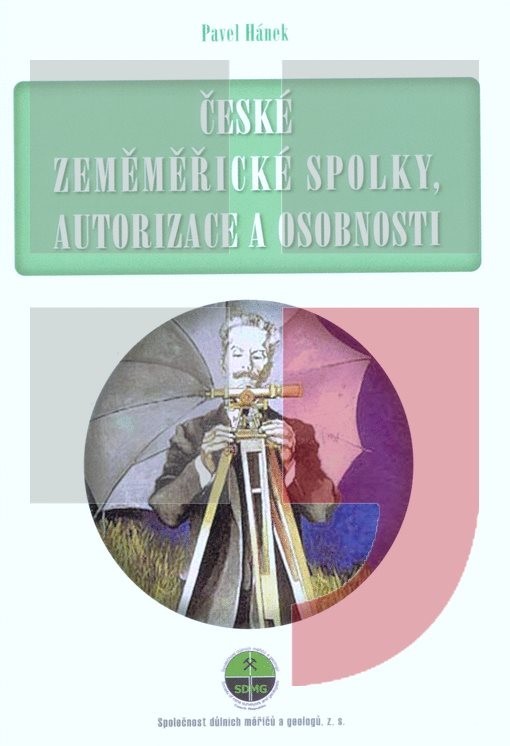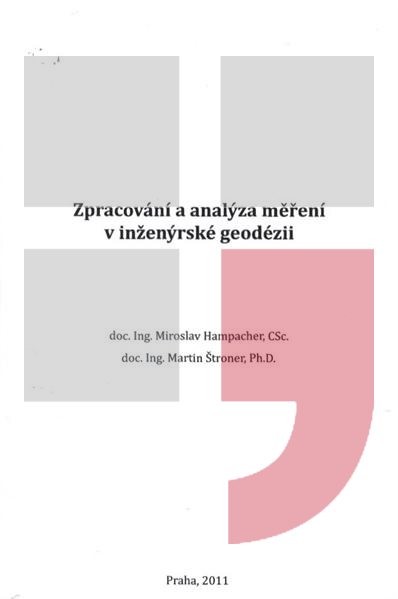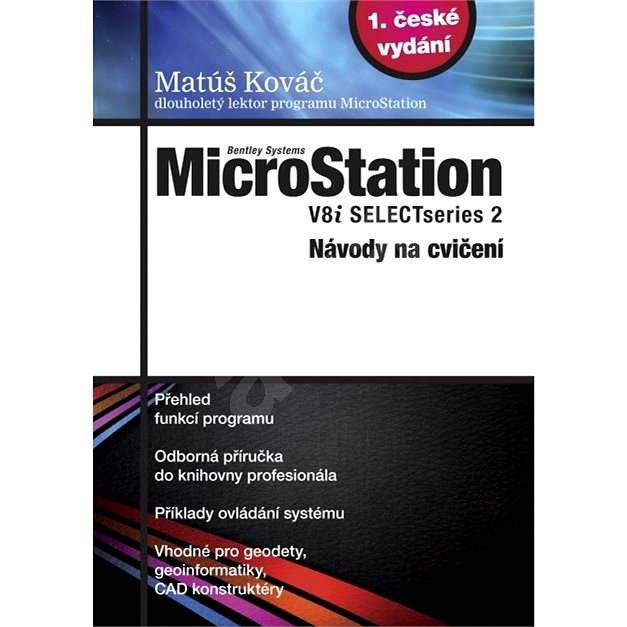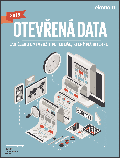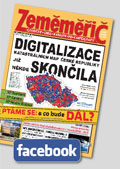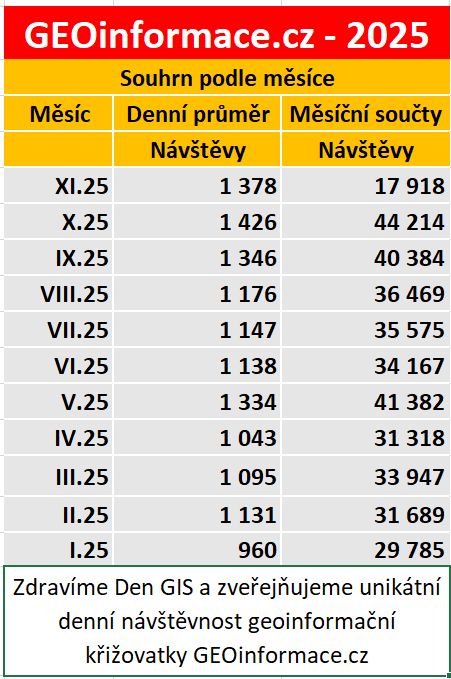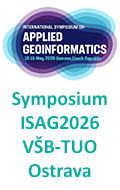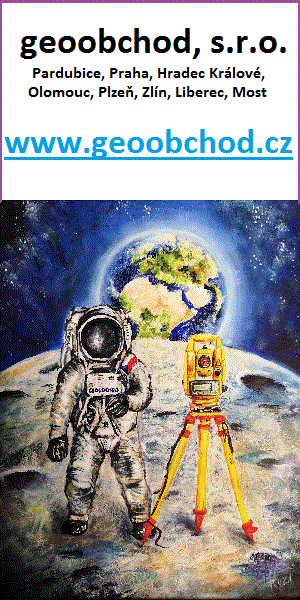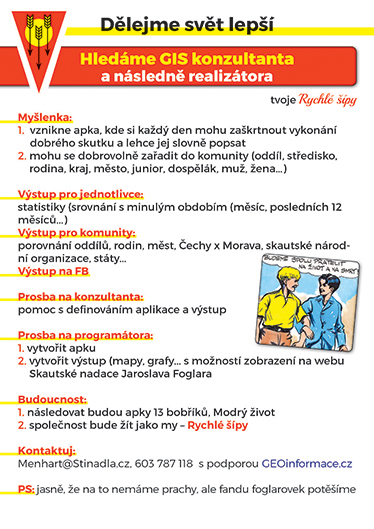zprávy
zdroje zpráv:20230403 - VŘ ředitel/ředitelka KÚ pro Olomoucký kraj
3.4.2023 14:04 ČÚZK - aktuality v resortu Oznámení o vyhlášení výběrového řízení na obsazení služebního místa vedoucí služebního úřadu - ředitel/ředitelka Katastrálního úřadu pro Olomoucký kraj.20230403 - VŘ ředitel/ředitelka KÚ pro Olomoucký kraj
3.4.2023 14:04 ČÚZK - předpisy a opatření Český úřad zeměměřický a katastrální zveřejnil novou aktualitu: Oznámení o vyhlášení výběrového řízení na obsazení služebního místa vedoucí služebního úřadu - ředitel/ředitelka Katastrálního úřadu pro Olomoucký kraj.20230403 - VŘ ředitel/ředitelka KÚ pro Olomoucký kraj
3.4.2023 14:04 ČÚZK - předpisy a opatření Český úřad zeměměřický a katastrální zveřejnil novou aktualitu: Oznámení o vyhlášení výběrového řízení na obsazení služebního místa vedoucí služebního úřadu - ředitel/ředitelka Katastrálního úřadu pro Olomoucký kraj.20230403 - VŘ ředitel/ředitelka KÚ pro Olomoucký kraj
3.4.2023 14:04 ČÚZK /Aktuality-resort/2023/20230403-VR-reditel-reditelka-KU-pro-Olomoucky-kra20230403 - VŘ ředitel/ředitelka KÚ pro Jihomoravský kraj
3.4.2023 14:00 ČÚZK - předpisy a opatření Český úřad zeměměřický a katastrální zveřejnil novou aktualitu: Oznámení o vyhlášení výběrového řízení na obsazení služebního místa vedoucí služebního úřadu - ředitel/ředitelka Katastrálního úřadu pro Jihomoravský kraj.20230403 - VŘ ředitel/ředitelka KÚ pro Jihomoravský kraj
3.4.2023 14:00 ČÚZK /Aktuality-resort/2023/20230403-VR-reditel-reditelka-KU-pro-Jihomoravsky20230403 - VŘ ředitel/ředitelka KÚ pro Jihomoravský kraj
3.4.2023 14:00 ČÚZK /Aktuality-resort/2023/20230403-VR-reditel-reditelka-KU-pro-Jihomoravsky-20230403 - VŘ ředitel/ředitelka KÚ pro Jihomoravský kraj
3.4.2023 14:00 ČÚZK - aktuality v resortu Oznámení o vyhlášení výběrového řízení na obsazení služebního místa vedoucí služebního úřadu - ředitel/ředitelka Katastrálního úřadu pro Jihomoravský kraj.20230403 - VŘ ředitel/ředitelka KÚ pro Jihomoravský kraj
3.4.2023 14:00 ČÚZK - předpisy a opatření Český úřad zeměměřický a katastrální zveřejnil novou aktualitu: Oznámení o vyhlášení výběrového řízení na obsazení služebního místa vedoucí služebního úřadu - ředitel/ředitelka Katastrálního úřadu pro Jihomoravský kraj.20230403 - VŘ ředitel/ředitelka KÚ pro Jihomoravský kraj
3.4.2023 14:00 ČÚZK - aktuality v resortu Oznámení o vyhlášení výběrového řízení na obsazení služebního místa vedoucí služebního úřadu - ředitel/ředitelka Katastrálního úřadu pro Jihomoravský kraj.Roadshow strojírenských technologií řady 2024
3.4.2023 14:00 Adeon
Zaregistrujte se na naši tradiční roadshow strojírenských technologií, na které vám předvedeme letošní novinky v Autodesk produktech pro konstruktéry a výrobu.
The post Roadshow strojírenských technologií řady 2024 appeared first on Adeon CZ.
20230403 - VŘ ředitel/ředitelka ZÚ
3.4.2023 13:56 ČÚZK - aktuality v resortu Oznámení o vyhlášení výběrového řízení na obsazení služebního místa vedoucí služebního úřadu - ředitel/ředitelka Zeměměřického úřadu.20230403 - VŘ ředitel/ředitelka ZÚ
3.4.2023 13:56 ČÚZK - aktuality v resortu Oznámení o vyhlášení výběrového řízení na obsazení služebního místa vedoucí služebního úřadu - ředitel/ředitelka Zeměměřického úřadu.20230403 - VŘ ředitel/ředitelka ZÚ
3.4.2023 13:56 ČÚZK - předpisy a opatření Český úřad zeměměřický a katastrální zveřejnil novou aktualitu: Oznámení o vyhlášení výběrového řízení na obsazení služebního místa vedoucí služebního úřadu - ředitel/ředitelka Zeměměřického úřadu.20230403 - VŘ ředitel/ředitelka ZÚ
3.4.2023 13:56 ČÚZK /Aktuality-resort/2023/20230403-VR-reditel-reditelka-ZU20230403 - VŘ ředitel/ředitelka ZÚ
3.4.2023 13:56 ČÚZK - předpisy a opatření Český úřad zeměměřický a katastrální zveřejnil novou aktualitu: Oznámení o vyhlášení výběrového řízení na obsazení služebního místa vedoucí služebního úřadu - ředitel/ředitelka Zeměměřického úřadu.Opožděné spuštění INT1
3.4.2023 13:39 ČÚZK - předpisy a opatřeníČÚZK informuje, že integrační prostředí IS DMVS "INT1" bude oproti původně ohlášenému termínu spuštěno z důvodu dobíhajících importů inicializačních dat později. S aktuální informací o zpřístupnění prostředí zde bude současně zveřejněna také dokumentace pro práci v INT1 a prerekvizity. Omlouváme se za případné komplikace.
Vedoucí služebního úřadu - ředitel/ředitelka Katastrálního úřadu pro Středočeský kraj
3.4.2023 13:21 ČÚZK - volná místa Český úřad zeměměřický a katastrální vypisuje výběrové řízení na místo Vedoucí služebního úřadu - ředitel/ředitelka Katastrálního úřadu pro Středočeský krajVedoucí služebního úřadu - ředitel/ředitelka Katastrálního úřadu pro Středočeský kraj
3.4.2023 13:21 ČÚZK /Urady/Cesky-urad-zememericky-a-katastralni/Uredni-deska/Oznameni-a-jina-uredni-sdeleni/Volna-mista/DMS/Vedouci-sluzebniho-uradu-reditel-reditelka-Kat-(2)Vedoucí služebního úřadu - ředitel/ředitelka Katastrálního úřadu pro Středočeský kraj
3.4.2023 13:21 ČÚZK - předpisy a opatření Český úřad zeměměřický a katastrálnívypisuje výběrové řízení na místo
Vedoucí služebního úřadu - ředitel/ředitelka Katastrálního úřadu pro Středočeský kraj
Vedoucí služebního úřadu - ředitel/ředitelka Katastrálního úřadu pro Olomoucký kraj
3.4.2023 13:08 ČÚZK - volná místa Český úřad zeměměřický a katastrální vypisuje výběrové řízení na místo Vedoucí služebního úřadu - ředitel/ředitelka Katastrálního úřadu pro Olomoucký krajVedoucí služebního úřadu - ředitel/ředitelka Katastrálního úřadu pro Olomoucký kraj
3.4.2023 13:08 ČÚZK /Urady/Cesky-urad-zememericky-a-katastralni/Uredni-deska/Oznameni-a-jina-uredni-sdeleni/Volna-mista/DMS/Vedouci-sluzebniho-uradu-reditel-reditelka-Kat-(1)Vedoucí služebního úřadu - ředitel/ředitelka Katastrálního úřadu pro Olomoucký kraj
3.4.2023 13:08 ČÚZK - předpisy a opatření Český úřad zeměměřický a katastrálnívypisuje výběrové řízení na místo
Vedoucí služebního úřadu - ředitel/ředitelka Katastrálního úřadu pro Olomoucký kraj
Vedoucí služebního úřadu - ředitel/ředitelka Katastrálního úřadu pro Jihomoravský kraj
3.4.2023 13:02 ČÚZK - předpisy a opatření Český úřad zeměměřický a katastrálnívypisuje výběrové řízení na místo
Vedoucí služebního úřadu - ředitel/ředitelka Katastrálního úřadu pro Jihomoravský kraj
Vedoucí služebního úřadu - ředitel/ředitelka Katastrálního úřadu pro Jihomoravský kraj
3.4.2023 13:02 ČÚZK /Urady/Cesky-urad-zememericky-a-katastralni/Uredni-deska/Oznameni-a-jina-uredni-sdeleni/Volna-mista/DMS/Vedouci-sluzebniho-uradu-reditel-reditelka-KatastrVedoucí služebního úřadu - ředitel/ředitelka Katastrálního úřadu pro Jihomoravský kraj
3.4.2023 13:02 ČÚZK - volná místa Český úřad zeměměřický a katastrální vypisuje výběrové řízení na místo Vedoucí služebního úřadu - ředitel/ředitelka Katastrálního úřadu pro Jihomoravský krajVedoucí služebního úřadu - ředitel/ředitelka Zeměměřického úřadu
3.4.2023 12:55 ČÚZK - volná místa Český úřad zeměměřický a katastrální vypisuje výběrové řízení na místo Vedoucí služebního úřadu - ředitel/ředitelka Zeměměřického úřaduVedoucí služebního úřadu - ředitel/ředitelka Zeměměřického úřadu
3.4.2023 12:55 ČÚZK - předpisy a opatření Český úřad zeměměřický a katastrálnívypisuje výběrové řízení na místo
Vedoucí služebního úřadu - ředitel/ředitelka Zeměměřického úřadu
Vedoucí služebního úřadu - ředitel/ředitelka Zeměměřického úřadu
3.4.2023 12:55 ČÚZK /Urady/Cesky-urad-zememericky-a-katastralni/Uredni-deska/Oznameni-a-jina-uredni-sdeleni/Volna-mista/DMS/Vedouci-sluzebniho-uradu-reditel-reditelka-ZememerNavVis je nyní k dispozici i v České republice
3.4.2023 12:30 3gon Předchozí Další NavVis překlenuje propast mezi fyzickým a digitálním světem a umožňuje poskytovatelům služeb a podnikům zachytit a sdílet zastavěnéSoutěž O cenu děkana 2023
3.4.2023 12:14 Katedra geoinformatiky UP OlomoucDne 4. května 2023 se koná studentská soutěž O cenu děkana. Přihlášení soutěžícíh a odevzdání prací je do 1. května 2023. Studenti bakalářského i magisterského studia neváhejte a přihlašte se do sekce Vědy o Zemi!
The post Soutěž O cenu děkana 2023 appeared first on Katedra geoinformatiky.
Soutěž O cenu děkana 2023
3.4.2023 12:14 Katedra geoinformatiky UP Olomouc Dne 4. května 2023 se koná studentská soutěž O cenu děkana. Přihlášení soutěžícíh a odevzdání prací je do 1. května 2023. Studenti bakalářského i magisterského studia neváhejte a přihlašte se do sekce Vědy o Zemi!Soutěž O cenu děkana 2023
3.4.2023 12:14 Katedra geoinformatiky UP OlomoucDne 4. května se koná studentská soutěž O cenu děkana. Přihlášení soutěžícíh a odevzdání prací je do 1. května 2023. Studenti bakalářského i magisterského studia neváhejte a přihlaště se do sekce Vědy o Zemi!
The post Soutěž O cenu děkana 2023 appeared first on Katedra geoinformatiky.
Současný svět pohledem družic (pozvánka)
3.4.2023 11:41 GISportal.cz
Zajímáte se o současné dění na naší planetě, jako jsou např. klimatické změny či válka na Ukrajině? Pokud ano, tak jste srdečně zváni na přednášku, která vám představí možnosti družicového průzkumu významných jevů a událostí, které zásadně ovlivňují životy lidí na naší planetě. Na vybraných místech naší planety budou pomocí družicových snímků dokumentovány změny, vyvolané válečnými konflikty, […]
The post Současný svět pohledem družic (pozvánka) appeared first on GISportal.cz.
Současný svět pohledem družic (pozvánka)
3.4.2023 11:41 GISportal.cz
Zajímáte se o současné dění na naší planetě, jako jsou např. klimatické změny či válka na Ukrajině? Pokud ano, tak jste srdečně zváni na přednášku, která vám představí možnosti družicového průzkumu významných jevů a událostí, které zásadně ovlivňují životy lidí na naší planetě. Na vybraných místech naší planety budou pomocí družicových snímků dokumentovány změny, vyvolané válečnými konflikty, […]
The post Současný svět pohledem družic (pozvánka) appeared first on GISportal.cz.
Jak vybrat více objektů v oblasti nepravidelného výběru při kopírování v AutoCAD/GstarCAD?
3.4.2023 9:33 GstarCADJak vybrat více objektů v oblasti nepravidelného výběru při kopírování v AutoCAD/GstarCAD?
3.4.2023 9:33 GstarCADNový produkt Data250
3.4.2023 9:00 ČÚZK - Geoportál Nový produkt Data250Datová sada "Topografická databáze České republiky (Data200)" byla nahrazen novým produktem Topografická databáze České republiky (Data250).
Data vznikla generalizací původní databáze Data200 pro měřítko 1:250 000, které odpovídá měřítku připravované základní topografické mapy ZTM 250 z nové edice státního mapového díla.
Data250 obsahuje cca 50 typů objektů. Data zahrnují osm tematických oblastí hranice, vodstvo, popis, sídla, doprava, vegetace, reliéf a různé objekty.
Data250 je poskytována jako otevřená data ve formátu SHP.
Nový produkt Data250
3.4.2023 9:00 ČÚZK - Geoportál Nový produkt Data250Datová sada "Topografická databáze České republiky (Data200)" byla nahrazena novým produktem Topografická databáze České republiky (Data250).
Data vznikla generalizací původní databáze Data200 pro měřítko 1:250 000, které odpovídá měřítku připravované základní topografické mapy ZTM 250 z nové edice státního mapového díla.
Data250 obsahuje cca 50 typů objektů. Data zahrnují osm tematických oblastí - hranice, vodstvo, popis, sídla, doprava, vegetace, reliéf a různé objekty.
Data250 je poskytována jako otevřená data ve formátu SHP.
Nový produkt Data250
3.4.2023 9:00 ČÚZK - Geoportál Nový produkt Data250Datová sada "Topografická databáze České republiky (Data200)" byla nahrazena novým produktem Topografická databáze České republiky (Data250).
Data vznikla generalizací původní databáze Data200 pro měřítko 1:250 000, které odpovídá měřítku připravované základní topografické mapy ZTM 250 z nové edice státního mapového díla.
Data250 obsahuje cca 50 typů objektů. Data zahrnují osm tematických oblastí - hranice, vodstvo, popis, sídla, doprava, vegetace, reliéf a různé objekty.
Data250 je poskytována jako otevřená data ve formátu SHP.
Nový produkt Data250
3.4.2023 9:00 ČÚZK - Geoportál Nový produkt Data250Datová sada "Topografická databáze České republiky (Data200)" byla nahrazena novým produktem Topografická databáze České republiky (Data250).
Data vznikla generalizací původní databáze Data200 pro měřítko 1:250 000, které odpovídá měřítku připravované základní topografické mapy ZTM 250 z nové edice státního mapového díla.
Data250 obsahuje cca 50 typů objektů. Data zahrnují osm tematických oblastí - hranice, vodstvo, popis, sídla, doprava, vegetace, reliéf a různé objekty.
Data250 je poskytována jako otevřená data ve formátu SHP.
Nový produkt Data250
3.4.2023 9:00 ČÚZK - Geoportál Nový produkt Data250Datová sada "Topografická databáze České republiky (Data200)" byla nahrazen novým produktem Topografická databáze České republiky (Data250).
Data vznikla generalizací původní databáze Data200 pro měřítko 1:250 000, které odpovídá měřítku připravované základní topografické mapy ZTM 250 z nové edice státního mapového díla.
Data250 obsahuje cca 50 typů objektů. Data zahrnují osm tematických oblastí hranice, vodstvo, popis, sídla, doprava, vegetace, reliéf a různé objekty.
Data250 je poskytována jako otevřená data ve formátu SHP.
Nový produkt Data250
3.4.2023 9:00 ČÚZK - Geoportál Nový produkt Data250Datová sada "Topografická databáze České republiky (Data200)" byla nahrazena novým produktem Topografická databáze České republiky (Data250).
Data vznikla generalizací původní databáze Data200 pro měřítko 1:250 000, které odpovídá měřítku připravované základní topografické mapy ZTM 250 z nové edice státního mapového díla.
Data250 obsahuje cca 50 typů objektů. Data zahrnují osm tematických oblastí - hranice, vodstvo, popis, sídla, doprava, vegetace, reliéf a různé objekty.
Data250 je poskytována jako otevřená data ve formátu SHP.
Nový produkt Data250
3.4.2023 9:00 ČÚZK - Geoportál Nový produkt Data250Datová sada "Topografická databáze České republiky (Data200)" byla nahrazena novým produktem Topografická databáze České republiky (Data250).
Data vznikla generalizací původní databáze Data200 pro měřítko 1:250 000, které odpovídá měřítku připravované základní topografické mapy ZTM 250 z nové edice státního mapového díla.
Data250 obsahuje cca 50 typů objektů. Data zahrnují osm tematických oblastí - hranice, vodstvo, popis, sídla, doprava, vegetace, reliéf a různé objekty.
Data250 je poskytována jako otevřená data ve formátu SHP.
Nový produkt Data250
3.4.2023 9:00 ČÚZK - Geoportál Nový produkt Data250Datová sada "Topografická databáze České republiky (Data200)" byla nahrazena novým produktem Topografická databáze České republiky (Data250).
Data vznikla generalizací původní databáze Data200 pro měřítko 1:250 000, které odpovídá měřítku připravované základní topografické mapy ZTM 250 z nové edice státního mapového díla.
Data250 obsahuje cca 50 typů objektů. Data zahrnují osm tematických oblastí - hranice, vodstvo, popis, sídla, doprava, vegetace, reliéf a různé objekty.
Data250 je poskytována jako otevřená data ve formátu SHP.
Nový produkt Data250
3.4.2023 9:00 ČÚZK - Geoportál Nový produkt Data250Datová sada "Topografická databáze České republiky (Data200)" byla nahrazena novým produktem Topografická databáze České republiky (Data250).
Data vznikla generalizací původní databáze Data200 pro měřítko 1:250 000, které odpovídá měřítku připravované základní topografické mapy ZTM 250 z nové edice státního mapového díla.
Data250 obsahuje cca 50 typů objektů. Data zahrnují osm tematických oblastí - hranice, vodstvo, popis, sídla, doprava, vegetace, reliéf a různé objekty.
Data250 je poskytována jako otevřená data ve formátu SHP.
Nový produkt Data250
3.4.2023 9:00 ČÚZK - Geoportál Nový produkt Data250Datová sada "Topografická databáze České republiky (Data200)" byla nahrazena novým produktem Topografická databáze České republiky (Data250).
Data vznikla generalizací původní databáze Data200 pro měřítko 1:250 000, které odpovídá měřítku připravované základní topografické mapy ZTM 250 z nové edice státního mapového díla.
Data250 obsahuje cca 50 typů objektů. Data zahrnují osm tematických oblastí - hranice, vodstvo, popis, sídla, doprava, vegetace, reliéf a různé objekty.
Data250 je poskytována jako otevřená data ve formátu SHP.
Nový produkt Data250
3.4.2023 9:00 ČÚZK - Geoportál Nový produkt Data250Datová sada "Topografická databáze České republiky (Data200)" byla nahrazena novým produktem Topografická databáze České republiky (Data250).
Data vznikla generalizací původní databáze Data200 pro měřítko 1:250 000, které odpovídá měřítku připravované základní topografické mapy ZTM 250 z nové edice státního mapového díla.
Data250 obsahuje cca 50 typů objektů. Data zahrnují osm tematických oblastí - hranice, vodstvo, popis, sídla, doprava, vegetace, reliéf a různé objekty.
Data250 je poskytována jako otevřená data ve formátu SHP.
Nový produkt Data250
3.4.2023 9:00 ČÚZK - Geoportál Nový produkt Data250Datová sada "Topografická databáze České republiky (Data200)" byla nahrazena novým produktem Topografická databáze České republiky (Data250).
Data vznikla generalizací původní databáze Data200 pro měřítko 1:250 000, které odpovídá měřítku připravované základní topografické mapy ZTM 250 z nové edice státního mapového díla.
Data250 obsahuje cca 50 typů objektů. Data zahrnují osm tematických oblastí - hranice, vodstvo, popis, sídla, doprava, vegetace, reliéf a různé objekty.
Data250 je poskytována jako otevřená data ve formátu SHP.
Nový produkt Data250
3.4.2023 9:00 ČÚZK - Geoportál Nový produkt Data250Datová sada "Topografická databáze České republiky (Data200)" byla nahrazena novým produktem Topografická databáze České republiky (Data250).
Data vznikla generalizací původní databáze Data200 pro měřítko 1:250 000, které odpovídá měřítku připravované základní topografické mapy ZTM 250 z nové edice státního mapového díla.
Data250 obsahuje cca 50 typů objektů. Data zahrnují osm tematických oblastí - hranice, vodstvo, popis, sídla, doprava, vegetace, reliéf a různé objekty.
Data250 je poskytována jako otevřená data ve formátu SHP.
Nový produkt Data250
3.4.2023 9:00 ČÚZK - Geoportál Nový produkt Data250Datová sada "Topografická databáze České republiky (Data200)" byla nahrazena novým produktem Topografická databáze České republiky (Data250).
Data vznikla generalizací původní databáze Data200 pro měřítko 1:250 000, které odpovídá měřítku připravované základní topografické mapy ZTM 250 z nové edice státního mapového díla.
Data250 obsahuje cca 50 typů objektů. Data zahrnují osm tematických oblastí - hranice, vodstvo, popis, sídla, doprava, vegetace, reliéf a různé objekty.
Data250 je poskytována jako otevřená data ve formátu SHP.
Nový produkt Data250
3.4.2023 9:00 ČÚZK - Geoportál Nový produkt Data250Datová sada "Topografická databáze České republiky (Data200)" byla nahrazena novým produktem Topografická databáze České republiky (Data250).
Data vznikla generalizací původní databáze Data200 pro měřítko 1:250 000, které odpovídá měřítku připravované základní topografické mapy ZTM 250 z nové edice státního mapového díla.
Data250 obsahuje cca 50 typů objektů. Data zahrnují osm tematických oblastí - hranice, vodstvo, popis, sídla, doprava, vegetace, reliéf a různé objekty.
Data250 je poskytována jako otevřená data ve formátu SHP.
Nový produkt Data250
3.4.2023 9:00 ČÚZK - Geoportál Nový produkt Data250Datová sada "Topografická databáze České republiky (Data200)" byla nahrazena novým produktem Topografická databáze České republiky (Data250).
Data vznikla generalizací původní databáze Data200 pro měřítko 1:250 000, které odpovídá měřítku připravované základní topografické mapy ZTM 250 z nové edice státního mapového díla.
Data250 obsahuje cca 50 typů objektů. Data zahrnují osm tematických oblastí - hranice, vodstvo, popis, sídla, doprava, vegetace, reliéf a různé objekty.
Data250 je poskytována jako otevřená data ve formátu SHP.
Nový produkt Data250
3.4.2023 9:00 ČÚZK - Geoportál Nový produkt Data250Datová sada "Topografická databáze České republiky (Data200)" byla nahrazena novým produktem Topografická databáze České republiky (Data250).
Data vznikla generalizací původní databáze Data200 pro měřítko 1:250 000, které odpovídá měřítku připravované základní topografické mapy ZTM 250 z nové edice státního mapového díla.
Data250 obsahuje cca 50 typů objektů. Data zahrnují osm tematických oblastí - hranice, vodstvo, popis, sídla, doprava, vegetace, reliéf a různé objekty.
Data250 je poskytována jako otevřená data ve formátu SHP.
Nový produkt Data250
3.4.2023 9:00 ČÚZK - Geoportál Nový produkt Data250Datová sada "Topografická databáze České republiky (Data200)" byla nahrazena novým produktem Topografická databáze České republiky (Data250).
Data vznikla generalizací původní databáze Data200 pro měřítko 1:250 000, které odpovídá měřítku připravované základní topografické mapy ZTM 250 z nové edice státního mapového díla.
Data250 obsahuje cca 50 typů objektů. Data zahrnují osm tematických oblastí - hranice, vodstvo, popis, sídla, doprava, vegetace, reliéf a různé objekty.
Data250 je poskytována jako otevřená data ve formátu SHP.
Nový produkt Data250
3.4.2023 9:00 ČÚZK - Geoportál Nový produkt Data250Datová sada "Topografická databáze České republiky (Data200)" byla nahrazena novým produktem Topografická databáze České republiky (Data250).
Data vznikla generalizací původní databáze Data200 pro měřítko 1:250 000, které odpovídá měřítku připravované základní topografické mapy ZTM 250 z nové edice státního mapového díla.
Data250 obsahuje cca 50 typů objektů. Data zahrnují osm tematických oblastí - hranice, vodstvo, popis, sídla, doprava, vegetace, reliéf a různé objekty.
Data250 je poskytována jako otevřená data ve formátu SHP.
Nový produkt Data250
3.4.2023 9:00 ČÚZK - Geoportál Nový produkt Data250Datová sada "Topografická databáze České republiky (Data200)" byla nahrazena novým produktem Topografická databáze České republiky (Data250).
Data vznikla generalizací původní databáze Data200 pro měřítko 1:250 000, které odpovídá měřítku připravované základní topografické mapy ZTM 250 z nové edice státního mapového díla.
Data250 obsahuje cca 50 typů objektů. Data zahrnují osm tematických oblastí - hranice, vodstvo, popis, sídla, doprava, vegetace, reliéf a různé objekty.
Data250 je poskytována jako otevřená data ve formátu SHP.
Nový produkt Data250
3.4.2023 9:00 ČÚZK - Geoportál Nový produkt Data250Datová sada "Topografická databáze České republiky (Data200)" byla nahrazena novým produktem Topografická databáze České republiky (Data250).
Data vznikla generalizací původní databáze Data200 pro měřítko 1:250 000, které odpovídá měřítku připravované základní topografické mapy ZTM 250 z nové edice státního mapového díla.
Data250 obsahuje cca 50 typů objektů. Data zahrnují osm tematických oblastí - hranice, vodstvo, popis, sídla, doprava, vegetace, reliéf a různé objekty.
Data250 je poskytována jako otevřená data ve formátu SHP.
Dubnová promo sleva 20 % na Autodesk Fusion 360, všechna rozšíření a produktové sady
3.4.2023 0:00 Arkance SystemsVyužijte slev na Autodesk Fusion 360, jeho 8 funkčních rozšíření a 2 produktové sady. Až do 28. dubna 2023.
Zpráva Dubnová promo sleva 20 % na Autodesk Fusion 360, všechna rozšíření a produktové sady pochází z arkance-systems.cz.
Dubnová promo sleva 20 % na Autodesk Fusion 360, všechna rozšíření a produktové sady
3.4.2023 0:00 Arkance SystemsVyužijte dubnových slev na produkt Autodesk Fusion 360, jeho 8 funkčních rozšíření a 2 produktové sady. Až do 28. dubna 2023.
Zpráva Dubnová promo sleva 20 % na Autodesk Fusion 360, všechna rozšíření a produktové sady pochází z arkance-systems.cz.
Jarní sleva 20 % na Fusion 360
3.4.2023 0:00 Adeon
Autodesk ohlásil jarní akci pro nové licence aplikace Fusion 360. V rámci akce lze pořídit nové licence se slevou 20 […]
The post Jarní sleva 20 % na Fusion 360 appeared first on Adeon CZ.
Novoroční sleva 30 % na Fusion 360
3.4.2023 0:00 Adeon
Autodesk ohlásil novoroční akci pro nové licence aplikace Fusion 360. V rámci akce lze pořídit nové licence se slevou 20 […]
The post Novoroční sleva 30 % na Fusion 360 appeared first on Adeon CZ.
TurboCAD Designer 28 CZ + třicet miliónů CAD Symbolů
2.4.2023 12:48 ŠPINAR - software Připravili jsme pro Vás další spojení TurboCAD Designer + CAD Symbols v akční ceně do 10. 4. 2023.TurboCAD Designer 28 CZ + třicet miliónů CAD Symbolů
2.4.2023 12:48 ŠPINAR - softwarePřipravili jsme pro Vás další spojení TurboCAD Designer + CAD Symbols v akční ceně do 10. 4. 2023.
The post TurboCAD Designer 28 CZ + třicet miliónů CAD Symbolů appeared first on ŠPINAR – software.
Symposium ICA Spring 2023: sborník abstraktů
1.4.2023 17:34 Česká kartografická společnostVe dnech 3. – 5. dubna 2023 probíhá v Olomouci mezinárodní sympozium s názvem ICA Spring Olomouc 2023 s titulem ATLASES: THEIR DESIGN AND USE. Symposium organizuje Katedra geoinformatiky Přírodovědecké fakulty Univerzity Palackého v Olomouci ve spolupráci se třemi komisemi Mezinárodní kartografické asociace, a to Commission on Atlases, Commission on Map Design a Commission on […]
The post Symposium ICA Spring 2023: sborník abstraktů first appeared on Česká kartografická společnost.
Prezentácia predsedu ÚGKK SR na VZ KGK
31.3.2023 21:40
ÚGKK SR
V sekcii Kataster nehnuteľností\aktuality je zverejnená Prezentácia predsedu ÚGKK SR na VZ KGK na Štrbskom plese – Najaktuálnejšie informácie z rezortu
MAWIS Geomatické služby – sleva 33 %
31.3.2023 16:59 Hrdlička SLEVA 33 % na nákup předplatného celé knihovny služeb. Akce prodloužena do 11. 4.GENESIS of a new Earth: join ESA’s Earth measurement mission
31.3.2023 13:41 ESA Navigation
The idea behind ESA’s GENESIS mission is simple: a fixed framework is needed to chart the relative positions of locations across our planet, and satellites in orbit serve as the foundation of this framework. Fix a satellite’s own position in space accurately enough and you can measure Earth under it much more precisely too.
GENESIS of a new Earth: join ESA’s Earth measurement mission
31.3.2023 13:41 ESA Navigation
The idea behind ESA’s GENESIS mission is simple: a fixed framework is needed to chart the relative positions of locations across our planet, and satellites in orbit serve as the foundation of this framework. Fix a satellite’s own position in space accurately enough and you can measure Earth beneath it much more precisely too.
20230403 - volné místo - Rada/odb.rada v OMaK kanceláře ředitele KÚ na Katastrálním úřadu pro ÚK
31.3.2023 12:01 ČÚZK - předpisy a opatření Katastrální úřad pro Ústecký kraj zveřejnil novou aktualitu: Nabídka volného místa - Rada / odborný rada v oddělení metodiky a kontroly kanceláře ředitele katastrálního úřadu na Katastrálním úřadu pro Ústecký kraj20230403 - volné místo - Rada/odb.rada v OMaK kanceláře ředitele KÚ na Katastrálním úřadu pro ÚK
31.3.2023 12:01 ČÚZK /Urady/Katastralni-urady/Katastralni-urady/Katastralni-urad-pro-Ustecky-kraj/O-uradu/Aktuality/20230331-volne-misto-Rada-odb-rada-v-OMaK-kanc-(1)Rada / odborný rada v oddělení metodiky a kontroly kanceláře ředitele katastrálního úřadu na Katastr
31.3.2023 11:59 ČÚZK - předpisy a opatření Katastrální úřad pro Ústecký kraj kancelář ředitelevypisuje výběrové řízení na místo
Rada / odborný rada v oddělení metodiky a kontroly kanceláře ředitele katastrálního úřadu na Katastrálním úřadu pro Ústecký kraj
Rada / odborný rada v oddělení metodiky a kontroly kanceláře ředitele katastrálního úřadu na Katastr
31.3.2023 11:59 ČÚZK - volná místa Katastrální úřad pro Ústecký kraj kancelář ředitele vypisuje výběrové řízení na místo Rada / odborný rada v oddělení metodiky a kontroly kanceláře ředitele katastrálního úřadu na KatastrRada / odborný rada v oddělení metodiky a kontroly kanceláře ředitele katastrálního úřadu na Katastr
31.3.2023 11:59 ČÚZK /Urady/Katastralni-urady/Katastralni-urady/Katastralni-urad-pro-Ustecky-kraj/Uredni-deska/Oznameni-a-jina-uredni-sdeleni/Volna-mista/DMS/Rada-odborny-rada-v-oddeleni-metodiky-a-kontro-(1)Is Europe already drying up?
31.3.2023 10:55 ESA Observing the Earth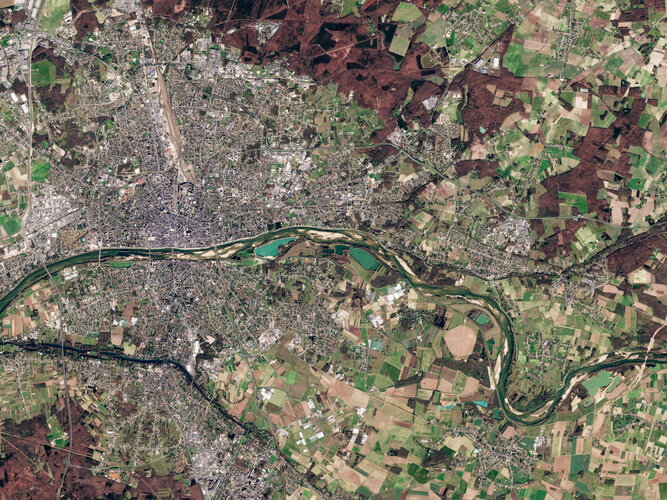
Europe has just endured its second warmest winter on record. Much of southern and western Europe has been affected by substantial anomalies of soil moisture owing to this exceptionally dry and warm winter. Data from ESA’s Soil Moisture and Ocean Salinity mission have been used to monitor the low levels of soil moisture across Europe.
UAVA se představila estonské delegaci z centra pro obranné investice
31.3.2023 10:50 UAVATento týden jsme představili za Alianci český bezpilotní letecký průmysl a výzkum Estonské delegaci z centra pro obranné investice, která navštívila několik předem společně vybraných firem v ČR se zaměřením na bezpilotní letectví.
The post UAVA se představila estonské delegaci z centra pro obranné investice appeared first on UAV Aliance pro bezpilotní letecký průmysl.
20230403 - volné místo – Odborný/vrchní referent v OPV KP Ústí n.L. na Katastrálním úřadu pro ÚK
31.3.2023 10:31 ČÚZK /Urady/Katastralni-urady/Katastralni-urady/Katastralni-urad-pro-Ustecky-kraj/Katastralni-pracoviste/KP-Usti-nad-Labem/O-uradu/Aktuality/20230403-volne-misto-–-Odborny-vrchni-referent-(1)20230403 - volné místo – Odborný/vrchní referent v OPV KP Ústí n.L. na Katastrálním úřadu pro ÚK
31.3.2023 10:31 ČÚZK - předpisy a opatření Katastrální úřad pro Ústecký kraj - Katastrální pracoviště Ústí nad Labem zveřejnil novou aktualitu: Nabídka volného místa - Odborný referent / vrchní referent v oddělení právních vztahů k nemovitostem Katastrálního pracoviště Ústí nad Labem na Katastrálním úřadu pro Ústecký kraj20230403 - volné místo – Odborný/vrchní referent v OPV KP Ústí n.L. na Katastrálním úřadu pro ÚK
31.3.2023 10:31 ČÚZK - předpisy a opatření Katastrální úřad pro Ústecký kraj - Katastrální pracoviště Ústí nad Labem zveřejnil novou aktualitu: Nabídka volného místa - Odborný referent / vrchní referent v oddělení právních vztahů k nemovitostem Katastrálního pracoviště Ústí nad Labem na Katastrálním úřadu pro Ústecký kraj20230403 - volné místo – Odborný/vrchní referent v OPV KP Ústí n.L. na Katastrálním úřadu pro ÚK
31.3.2023 10:31 ČÚZK /Urady/Katastralni-urady/Katastralni-urady/Katastralni-urad-pro-Ustecky-kraj/O-uradu/Aktuality/20230403-volne-misto-–-Odborny-vrchni-referent-(1)Odborný referent / vrchní referent v oddělení právních vztahů k nemovitostem Katastrálního pracovišt
31.3.2023 10:29 ČÚZK /Urady/Katastralni-urady/Katastralni-urady/Katastralni-urad-pro-Ustecky-kraj/Uredni-deska/Oznameni-a-jina-uredni-sdeleni/Volna-mista/DMS/Odborny-referent-vrchni-referent-v-oddeleni-pravniOdborný referent / vrchní referent v oddělení právních vztahů k nemovitostem Katastrálního pracovišt
31.3.2023 10:29 ČÚZK - předpisy a opatření Katastrální úřad pro Ústecký kraj Katastrální pracoviště Ústí nad Labemvypisuje výběrové řízení na místo
Odborný referent / vrchní referent v oddělení právních vztahů k nemovitostem Katastrálního pracoviště Ústí nad Labem na Katastrálním úřadu pro Ústecký kraj
Odborný referent / vrchní referent v oddělení právních vztahů k nemovitostem Katastrálního pracovišt
31.3.2023 10:29 ČÚZK - volná místa Katastrální úřad pro Ústecký kraj Katastrální pracoviště Ústí nad Labem vypisuje výběrové řízení na místo Odborný referent / vrchní referent v oddělení právních vztahů k nemovitostem Katastrálního pracovišt20230403 - volné místo – Odborný/vrchní referent v OAaD KP Ústí n.L. na Katastrálním úřadu pro ÚK
31.3.2023 10:20 ČÚZK /Urady/Katastralni-urady/Katastralni-urady/Katastralni-urad-pro-Ustecky-kraj/Katastralni-pracoviste/KP-Usti-nad-Labem/O-uradu/Aktuality/20230403-volne-misto-–-Odborny-vrchni-referent-v-O20230403 - volné místo – Odborný/vrchní referent v OAaD KP Ústí n.L. na Katastrálním úřadu pro ÚK
31.3.2023 10:20 ČÚZK - předpisy a opatření Katastrální úřad pro Ústecký kraj - Katastrální pracoviště Ústí nad Labem zveřejnil novou aktualitu: Nabídka volného místa - Odborný referent / vrchní referent v oddělení aktualizace a dokumentace katastru nemovitostí Katastrálního pracoviště Ústí nad Labem na Katastrálním úřadu pro Ústecký kraj20230403 - volné místo – Odborný/vrchní referent v OAaD KP Ústí n.L. na Katastrálním úřadu pro ÚK
31.3.2023 10:20 ČÚZK /Urady/Katastralni-urady/Katastralni-urady/Katastralni-urad-pro-Ustecky-kraj/O-uradu/Aktuality/20230403-volne-misto-–-Odborny-vrchni-referent-v-O20230403 - volné místo – Odborný/vrchní referent v OAaD KP Ústí n.L. na Katastrálním úřadu pro ÚK
31.3.2023 10:20 ČÚZK - předpisy a opatření Katastrální úřad pro Ústecký kraj - Katastrální pracoviště Ústí nad Labem zveřejnil novou aktualitu: Nabídka volného místa - Odborný referent / vrchní referent v oddělení aktualizace a dokumentace katastru nemovitostí Katastrálního pracoviště Ústí nad Labem na Katastrálním úřadu pro Ústecký krajEarth from Space: Pollino National Park, Italy
31.3.2023 10:00 ESA Observing the Earth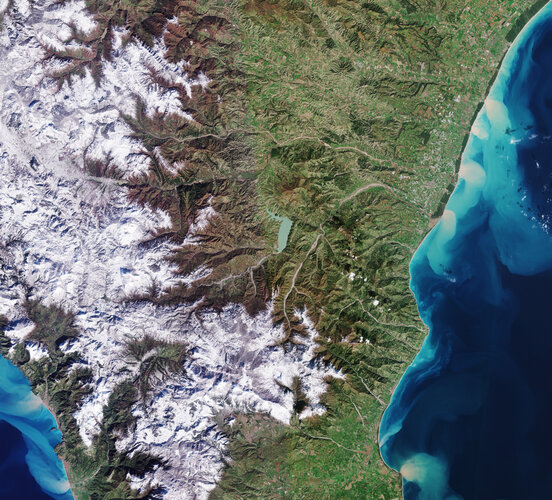 Image:
Part of southern Italy is featured in this wintery image, captured by the Copernicus Sentinel-2 mission.
Image:
Part of southern Italy is featured in this wintery image, captured by the Copernicus Sentinel-2 mission.
20230331 - volné místo - Rada/odb.rada v OMaK kanceláře ředitele KÚ na Katastrálním úřadu pro ÚK
31.3.2023 9:25 ČÚZK /Urady/Katastralni-urady/Katastralni-urady/Katastralni-urad-pro-Ustecky-kraj/O-uradu/Aktuality/20230331-volne-misto-Rada-odb-rada-v-OMaK-kancelar20230331 - volné místo - Rada/odb.rada v OMaK kanceláře ředitele KÚ na Katastrálním úřadu pro ÚK
31.3.2023 9:25 ČÚZK - předpisy a opatření Katastrální úřad pro Ústecký kraj zveřejnil novou aktualitu: Nabídka volného místa - Rada / odborný rada v oddělení metodiky a kontroly kanceláře ředitele katastrálního úřadu na Katastrálním úřadu pro Ústecký krajNabídka nepotřebného majetku – dopravní technika
31.3.2023 7:38 ČÚZK /Urady/Katastralni-urady/Katastralni-urady/Katastralni-urad-pro-Plzensky-kraj/Nabidky-majetku/Nabidka-nepotrebneho-majetku-–-dopravni-technikaNabídka nepotřebného majetku – dopravní technika
31.3.2023 7:38 ČÚZK - předpisy a opatřeníKatastrální úřad pro Plzeňský kraj nabízí nepotřebný majetek k odkupu. Jedná se o
Nabídka nepotřebného majetku – dopravní technika
EUSPA renews mandate of Administrative Board Chair and Deputy Chair
30.3.2023 15:56 European GNSS Agency
Today, during the 9th EUSPA Administrative Board, Member State Representatives extended the mandate of Mr. Kobera and Codosero Bolaños for another two years.
Mr. Kobera is a Czech national with vast experience in space-related activities and, more concretely, satellite navigation. He has held several managerial positions in the public sector, namely, at the Czech Ministry of Transport.
Mr. Codosero Bolaños is a Spanish national and aeronautical engineer specialized in jet engines with extensive experience in both the public and private sectors in areas related to aviation and aerospace.
"I am honored to have received the support of my fellow AB colleagues for a second time," says Kobera.
"In 2021, we set concrete goals, prepared and successfully implemented the EUSPA Administrative Board Action Plan. There are still many challenges in front of us. EUSPA is also becoming instrumental to the New Space Economy and with an increase in staff and responsibilities, it has to be ready to absorb new tasks. In my capacity as Chair of the Board, and by working together with the European Commission, the Member States, the European Space Agency, and other EU Space Programme’s partners, I will do my best to further support the programme’s implementation," he concludes.
"I am honored to have been re-elected by my peers as Deputy Chair for the EUSPA AB. I will continue to support EUSPA and my colleagues of the Board and will continue to strive to foster greater collaboration and involvement among and with the Member States, so that we can maximize the benefits and outcomes of this crucial programme." adds Codosero Bolaños.
"I would like to congratulate both Vaclav Kobera and Juan Manuel Codosero Bolaños on their re-election. As we move forward, I am eager to continue the collaboration with them once again towards our shared goal of strengthening the presence of EU space data and services in all sectors of our society," highlights EUSPA Executive Director Rodrigo da Costa.
The EUSPA Administrative Board consists of representatives from each EU Member State, the European Commission and the European parliament. The Board meets at least twice a year to take various decisions (budget, work programme, etc.) and ensure that the Agency performs its entrusted tasks according to regulation.
Read this: EU Space key to enabling a harmonised drone ecosystem
EUSPA works closely with Member States via workshops organised to communicate the benefits of the EU Space Programme and to transfer space market intelligence and know-how to various domains of the economy and society. In this spirit, and taking stock from the EU Space for Green Transformation Report, the agency is hosting a workshop on how space data and services can help the private sector go greener.
Media note: This feature can be republished without charge provided the European Union Agency for the Space Programme (EUSPA) is acknowledged as the source at the top or the bottom of the story. You must request permission before you use any of the photographs on the site. If you republish, we would be grateful if you could link back to the EUSPA website (http://www.euspa.europa.eu).
EUSPA renews mandate of Administrative Board Chair and Deputy Chair
30.3.2023 15:56 European GNSS Agency
Today, during the 9th EUSPA Administrative Board, Member State Representatives extended the mandate of Mr. Kobera and Codosero Bolaños for another two years.
Mr. Kobera is a Czech national with vast experience in space-related activities and, more concretely, satellite navigation. He has held several managerial positions in the public sector, namely, at the Czech Ministry of Transport.
Mr. Codosero Bolaños is a Spanish national and aeronautical engineer specialized in jet engines with extensive experience in both the public and private sectors in areas related to aviation and aerospace.
"I am honored to have received the support of my fellow AB colleagues for a second time," says Kobera.
"In 2021, we set concrete goals, prepared and successfully implemented the EUSPA Administrative Board Action Plan. There are still many challenges in front of us. EUSPA is also becoming instrumental to the New Space Economy and with an increase in staff and responsibilities, it has to be ready to absorb new tasks. In my capacity as Chair of the Board, and by working together with the European Commission, the Member States, the European Space Agency, and other EU Space Programme’s partners, I will do my best to further support the programme’s implementation," he concludes.
"I am honored to have been re-elected by my peers as Deputy Chair for the EUSPA AB. I will continue to support EUSPA and my colleagues of the Board and will continue to strive to foster greater collaboration and involvement among and with the Member States, so that we can maximize the benefits and outcomes of this crucial programme." adds Codosero Bolaños.
"I would like to congratulate both Vaclav Kobera and Juan Manuel Codosero Bolaños on their re-election. As we move forward, I am eager to continue the collaboration with them once again towards our shared goal of strengthening the presence of EU space data and services in all sectors of our society," highlights EUSPA Executive Director Rodrigo da Costa.
The EUSPA Administrative Board consists of representatives from each EU Member State, the European Commission and the European parliament. The Board meets at least twice a year to take various decisions (budget, work programme, etc.) and ensure that the Agency performs its entrusted tasks according to regulation.
Read this: EU Space key to enabling a harmonised drone ecosystem
EUSPA works closely with Member States via workshops organised to communicate the benefits of the EU Space Programme and to transfer space market intelligence and know-how to various domains of the economy and society. In this spirit, and taking stock from the EU Space for Green Transformation Report, the agency is hosting a workshop on how space data and services can help the private sector go greener.
Media note: This feature can be republished without charge provided the European Union Agency for the Space Programme (EUSPA) is acknowledged as the source at the top or the bottom of the story. You must request permission before you use any of the photographs on the site. If you republish, we would be grateful if you could link back to the EUSPA website (http://www.euspa.europa.eu).
rada/odborný rada – rozhodování o povolení vkladu
30.3.2023 13:31 ČÚZK - volná místa Katastrální úřad pro Olomoucký kraj Katastrální pracoviště Šumperk vypisuje výběrové řízení na místo rada/odborný rada – rozhodování o povolení vkladurada/odborný rada – rozhodování o povolení vkladu
30.3.2023 13:31 ČÚZK - předpisy a opatření Katastrální úřad pro Olomoucký kraj Katastrální pracoviště Šumperkvypisuje výběrové řízení na místo
rada/odborný rada – rozhodování o povolení vkladu
rada/odborný rada – rozhodování o povolení vkladu
30.3.2023 13:31 ČÚZK /Urady/Katastralni-urady/Katastralni-urady/Katastralni-urad-pro-Olomoucky-kraj/Uredni-deska/Oznameni-a-jina-uredni-sdeleni/Volna-mista/DMS/rada-odborny-rada-–-rozhodovani-o-povoleni-vkl-(1)výběrové řízení na KP Jihlava
30.3.2023 12:02 ČÚZK - předpisy a opatření Katastrální úřad pro Vysočinu - Katastrální pracoviště Jihlava zveřejnil novou aktualitu: Oznámení o vyhlášení výběrového řízení na služební místo vrchní referent/rada - oddělení aktualizace KN II Katastrálního pracoviště Jihlava na Katastrálním úřadu pro Vysočinu.referent v oddělení katastrálního operátu
30.3.2023 11:52 ČÚZK - volná místa Katastrální úřad pro Pardubický kraj vypisuje výběrové řízení na místo referent v oddělení katastrálního operátureferent v oddělení katastrálního operátu
30.3.2023 11:52 ČÚZK /Urady/Katastralni-urady/Katastralni-urady/Katastralni-urad-pro-Pardubicky-kraj/Volna-mista/DMS/referent-v-oddeleni-katastralniho-operatureferent v oddělení katastrálního operátu
30.3.2023 11:52 ČÚZK - předpisy a opatření Katastrální úřad pro Pardubický krajvypisuje výběrové řízení na místo
referent v oddělení katastrálního operátu




